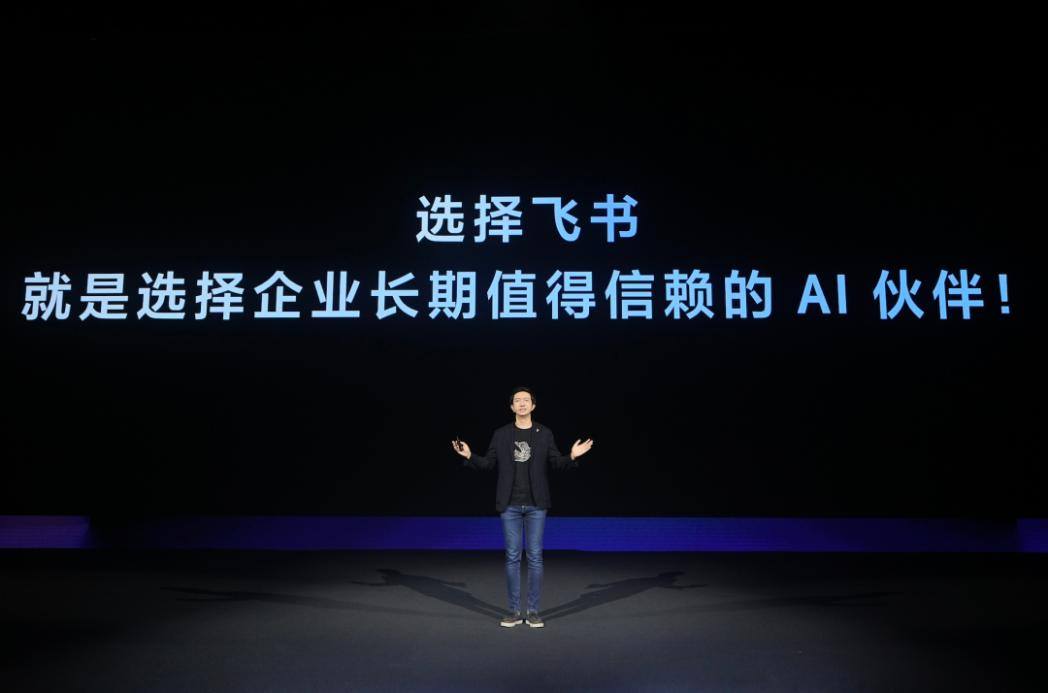Feishu Unveils Transparency in AI-Powered Collaborative Office Work
![]() 07/16 2025
07/16 2025
![]() 469
469
Author | AI Relativity
In the realm of collaborative office work, the advent of AI has spurred vendors like Microsoft, DingTalk, Google Workspace, Salesforce, WeChat Work, and Feishu to deeply integrate AI technology, redefining office paradigms through intelligent meetings, content creation, and data management.
Microsoft, via Microsoft 365 Copilot, embeds AI into daily office routines, emphasizing scenarios like intelligent meetings, collaboration, content creation, and optimization. DingTalk, meanwhile, focuses on intelligent meetings, document collaboration, data analysis, and knowledge management, recently introducing AI Sheets to integrate documents into data tables, redefining data management.
Upon initial observation, AI applications in collaborative office work seem limited, often centered around process optimization and management upgrades in meetings, data, content, and knowledge. At this year's "Infinite Future Conference," Feishu unveiled multiple AI products and functional upgrades, including knowledge Q&A, AI meetings, and enhanced multi-dimensional tables. With core scenarios remaining consistent, does this truly add value?

The answer is a resounding yes. With AI technology deeply integrated into collaborative office work, the focus now lies in making AI tools genuinely serve business needs, rather than expanding scenarios. This is the most challenging aspect of reconstructing the collaborative office paradigm—systematically dismantling the uncertainty and ambiguity in AI applications, transforming AI into an explainable, controllable, and implementable productivity tool.
AI in collaborative office work remains a "black box"
In collaborative office scenarios, the "black box" nature of AI doesn't imply ineffectiveness; rather, it signifies that users (including employees, managers, and IT departments) lack transparency into the decision-making logic, data processing, and result generation. Users can see inputs and outputs but can't explain the reasoning behind AI's decisions or the data basis for results.
The struggle with knowledge management often stems not from AI's insufficiency but from traditional AI applications relying on external knowledge bases, which may contain inaccurate information, creating a "black box." While companies can build structured knowledge bases for AI training and reasoning, this is complex. Large companies face organizational and knowledge accumulation challenges, while SMEs lack systematic organization and face fragmented knowledge distribution.
Feishu's knowledge Q&A addresses this by eliminating the need for a pre-built knowledge base. AI directly captures knowledge, understands permissions, and structurally outputs answers from daily information like chat records, meeting minutes, and enterprise documents.
This feature fundamentally changes traditional AI tools' dependence on external knowledge bases through enterprise-level data closed loops. In Feishu's demo, when CEO Xie Xin asked about the progress of the Feishu Hongmeng project, the system automatically associated documents, chat records, and meeting minutes, generating a structured answer with source links.
This "what you see is what you get" design not only leverages daily information without a structured knowledge base but also breaks the AI "black box," making AI's reasoning process transparent and reducing internal knowledge-based hallucinations.
Reflecting on this, the crux of AI applications in collaborative office scenarios isn't scenario expansion but solving the "black box" issue. Vendors like Feishu aim to balance efficiency and reliability by making AI's knowledge sources, reasoning processes, and data basis more transparent.
Completing the "last mile" within the triple closed loop of "technology-function-scenario"
AI applications in collaborative office work typically follow a triple closed loop of "technology-function-scenario," where technology creates functions, functions are applied in scenarios, and ultimately, a closed loop is achieved. Upgrades often revolve around these three modules.
Feishu's upgraded AI meetings are no exception, leveraging technologies like voiceprint recognition for real-time verbatim transcripts, structured meeting minutes, and action item extraction. For collaborative office scenarios, Feishu AI meetings enable real-time saving and conversion of meeting data, information, and knowledge into enterprise assets, summarized through AI functions and fed back to users, completing the triple closed loop upgrade.

While many AI applications exist in collaborative office work, some fall short due to poor user experience. Under the triple closed-loop logic, some only complete the first two loops, missing the crucial final "scenario" loop, leading to failed implementation.
For instance, many office platforms attempt "knowledge Q&A," but traditional AI applications require manual knowledge base building, impractical in real office scenarios due to labor and time costs. This limits usage and hinders knowledge Q&A's popularization in collaborative office scenarios.
Feishu's knowledge management focuses on the enterprise's office scenario data closed loop, completing the triple closed loop's "last mile" and promoting knowledge management implementation. DingTalk's AI Sheets similarly converts business logic and data into AI-executable digital models, transforming technical capabilities into intelligent functions and assisting in scenario analysis and decision-making.
Without the final "scenario" loop integration, "AI Sheets" would remain smarter tables, unable to realize their full potential. This underscores top office platforms' focus on scenario-based technology and function upgrades in AI applications.
Under this trend, AI in collaborative office work is accelerating, with scenarios serving as the ultimate sieve. Those who effectively apply AI within scenarios and dismantle the "black box" will excel in today's competitive landscape. Success hinges not on AI technology advancement or scenario quantity but on implementation logic and effectiveness.
As Feishu CEO Xie Xin notes, "In the AI era, enterprises need not more functions but mature tools that truly solve problems." When AI decisions are traceable, functions verifiable, and scenarios value-creating, the collaborative office work "black box" is truly shattered, ushering in a paradigm revolution led by Feishu.
*All images in this article are sourced from the internet








